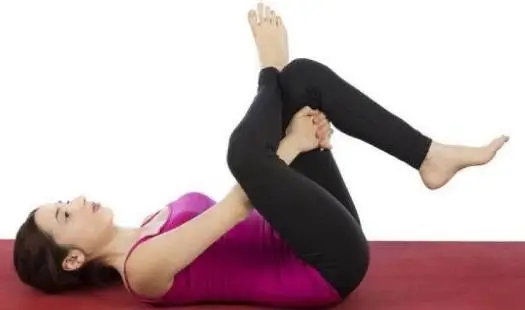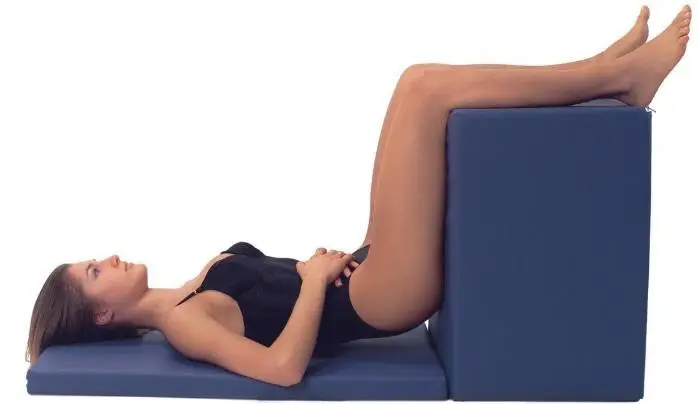San Francisco Sciatica Doctors
What Is Sciatica?
Sciatica refers to pain that radiates along the path of the sciatic nerve. This nerve, the longest in the body, originates in the low back and then runs through the pelvis and buttocks and down each leg. When acute, sciatica can be disabling. It can also present in a more chronic indolent manner, creating a linear pull or tightness in the buttock radiating down the back of the leg to the foot. Sciatica is a descriptive term about a condition. It is never a diagnosis. For treatment of sciatica to be successful, a diagnosis as to what is causing it must first be determined.
Anatomy Overview
The sciatic nerve is the thickest nerve in the body. It develops from nerve roots in the lumbar and sacral spine, specifically L4, L5, S1-3. These roots join together to form the sacral plexus. The nerve runs through the middle of the buttock, in front of the piriformis muscle, before descending along the back of the thigh and into the lower leg to the foot. All of the muscles below the knee obtain their nerve supply from the sciatic nerve and injuries to the nerve may result in weakness in these muscles.
The Nervous System: All Tied Together
Nerves are elastic and must be mobile and have the ability to bend and stretch as they run through our bodies between muscles and layers of connective tissue. They do not like compression. This is certainly true of the sciatic nerve, the largest nerve in the body. Nerves are surrounded by a sheath, the epineurium. The nervous system is really a continuous structure with the dura mater of the brain and spinal cord connected with the perineurium of the peripheral nerve. We see this in clinical practice when straightening a leg triggers pain in the neck or upper extremity or movement of the neck causes sciatic symptoms in a leg.
Causes of Sciatica
Lumbar Spine
Disc Herniation
This is one of the most common causes of sciatica. When a disc in the low back herniates, its inner gel-like substance leaks out and can irritate or compress one of the nerve roots that form part of the sciatic nerve. This is usually the disc between L4-5 or L5-S1. The pain is often acute, following a lifting or twisting injury and can be debilitating. Numbness in the foot and weakness of muscles in the foot that derive their innervation from the sciatic nerve may be present. Sitting is often poorly tolerated and being supine (on the back) with knees bent may provide some relief.
Spinal Stenosis
This condition develops slowly over time and is the natural developmental consequence of deterioration in the disc and the secondary arthritic changes in the joints of the spine that accompany it. Everyone ultimately develops some degree of spinal stenosis although most are without symptoms. Here again, lifting or forward bending may be a trigger that produces symptoms in someone who was previously asymptomatic. In sciatica due to spinal stenosis the pain is usually more chronic presenting as a linear pull in the leg frequently present with walking or standing. Patients often note changes in their functionality, seeing their ability to walk curtailed or having to sit rather than stand at a party or when visiting a museum.
Spondylolisthesis
Spondylolisthesis is a condition in which a vertebra slips forward or backward on an adjacent vertebra. It may be a congenital condition, but more frequently is part of progressive arthritic change in the spine. The sciatica it produces is often the more chronic type.
Tumors or Infections
Although rarer, these conditions must always be considered. They are usually accompanied by other signs of systemic illness such as fever, chills or weight loss. A detailed clinical history will often raise the level of suspicion for this diagnosis.
The Pelvis
The sciatic nerve, after its lumbar and sacral nerve roots join, runs through the pelvis. Any inflammatory condition or scar tissue in the pelvis may irritate the sciatic nerve. This may include endometriosis, previous pelvic inflammatory disease or scar tissue from abdominal or pelvic surgery. In these instances, the sciatic pain is usually the more indolent variety. It often presents as tightness in a hamstring muscle. The sciatic nerve runs beneath the hamstring and the hamstring tightens to protect the irritated nerve.
Piriformis Syndrome
The piriformis muscle runs from the sacrum to the lateral hip crossing the middle of the buttock. Beneath it runs the sciatic nerve. Although many practitioners ascribe sciatica to piriformis tightness, in our experience it may be a contributing factor, but is rarely the sole cause of sciatica. It should, however, always be considered and stretching the piriformis is an integral part of any rehabilitation program for sciatica.
Pregnancy
The hormone, Relaxin, present in pregnancy increases the laxity of ligaments leading to imbalances in the pelvis that can put pressure on the sciatic nerve.
At the Physicians’ Back Institute, Drs. Irène and Robert Minkowsky are experts in determining the cause of an individual’s sciatica and building a rehabilitation program based on sound clinical findings. The more precise a diagnosis, the more likely that treatment is effective and long lasting.
Sciatica Symptoms
True sciatica is a severe disabling nerve pain that may begin in the low back or buttock and then follows the route of the nerve, descending the back of the leg to the foot. It may be accompanied by muscle weakness in the foot, specifically resulting in difficulty pulling the foot up or walking on the heels. Severe weakness may also affect the calf muscle, the gastrocnemius, and the ability to walk on tiptoes. This may be accompanied by tingling (pins & needles) or loss of sensation (numbness) in the lower leg and foot. True sciatica usually results from compression or irritation of the nerve in or around the spine.
It is extremely common for individuals to have neuralgia in the distribution of the sciatic nerve. This is nerve pain in the areas where the sciatic runs, but of a lesser intensity. Think of this pain as a variation of true sciatica. It is frequently intermittent and may present as more of a pulling sensation or tension in the leg. Muscle weakness or other neurologic findings are usually absent although there may be mild tingling. Neuralgia in a sciatic distribution results from irritation of the nerve anywhere along its trajectory from the lower back to the buttock (piriformis syndrome), pelvis or leg. Often scarring from a previous inflammatory process may be responsible such as post disc injury, post-surgery, endometriosis or trauma. Rarely a tumor may be the cause.
Sciatica Pain Treatment & Management
The most important question for a physician treating someone suffering with sciatica is to determine where the nerve is being compressed or irritated. Is it related to a condition in the spine or to an extraspinal condition such as pelvic scar tissue?
Once the location of nerve compression has been determined, the treatment has a greater likelihood of success. This may include a steroid injection, osteopathic manipulation, myofascial release, craniosacral work, therapeutic exercise and improved ergonomics.
Without a precise diagnosis, however, performing an epidural injection when the sciatic nerve is encased in scar tissue or the piriformis muscle is tight will have little to no effect. Making a proper diagnosis is the key to successful treatment.
At the Physicians’ Back Institute, Drs. Irène & Robert Minkowsky will devote the time to take a comprehensive medical history and perform a detailed physical examination. They will make a precise diagnosis of your condition and provide a comprehensive and effective treatment plan. They look forward to working with you.
Our SF sciatica doctors use nonsurgical treatment to resolve sciatica and other types of nerve pain.
Stretches for Pain Relief: The Risks
In an individual presenting with acute sciatica, the first diagnostic consideration is usually to think of a spinal origin, particularly an acute disc injury or herniation. Sitting is poorly tolerated as it loads the spine and lifting the leg, either when seated or lying down, may produce excruciating pain down the leg (straight leg raising). The temptation for an individual is to think that doing stretches for sciatica pain may be helpful. On the contrary, sciatic nerve stretches in an acute situation will usually aggravate the symptoms. Nerves enjoy being stretched, but not when they are inflamed. Gentle short duration repetitive stretches for sciatica when it is a more chronic condition resulting from scar tissue is however beneficial. Surgery for sciatic pain is usually not necessary as 92% of individuals with an acute disc injury get better with conservative medical treatment.
The Best Sciatic Nerve Pain Stretches
In an acute setting, always avoid stretching exercises to relieve sciatica as they will only aggravate symptoms. Any position that involves a straight leg stretches the nerve. Yoga should be avoided. When walking or doing other activities, keeping a slight bend in the knee may be helpful.
It is always best to begin exercises for sciatica in a very indirect manner. This is definitely not a circumstance where “no pain, no gain” applies. A nerve must slide and glide through its entire length. If we lose the slide and glide, nerve tension arises. Initially sciatica nerve stretches are best done with a bent leg. Lie on your back on the floor with your leg in a bent starting position with your feet resting on a chair or couch. This puts the nerve to rest and takes tension out of the leg. In this position a stretch to help sciatica is to flex and extend the foot (nerve flossing). This stretches the sciatic nerve indirectly and is a useful way to begin stretching exercise for sciatica. Slowly this exercise can be progressed to a straight leg. (If stretching with a straight leg, the heel should be pushed into a surface to activate the hamstring and avoid overstretching the nerve).
The piriformis muscle crosses the buttock horizontally, attaching at the sacrum and greater trochanter of the femur. The sciatic nerve runs vertically beneath it. Stretching the piriformis is thus always one of the most important pieces of medical advice for pain in the sciatic nerve. A figure 4 stretch or pigeon pose in yoga is one means of stretching the piriformis muscle.




What Sets Our Sciatica Treatment Apart
Drs. Irène & Robert Minkowsky are physiatrists, osteopaths and orthopedic medicine specialists who have been in practice for over 30 years, treating and helping individuals with nerve pain and sciatica. Sciatica is usually caused by compression of the nerve roots of the lower lumbar or lumbosacral spine.
The compression can occur in or around the spine where the nerves exit or anywhere along the trajectory of the nerve. This may include compression in the pelvis from scar tissue or in the buttock from a tight piriformis muscle (piriformis syndrome). Conditions in the spine that may cause sciatica include disc herniation or lumbar spinal stenosis.
